The progress of telecommunications systems encourages the development of new technologies which provide larger opportunities for communication and transmission of information. At the same time, one of the main trends in the development of modern technologies is the introduction of wireless devices and networks which allow the communication and transmission of data between people. In this respect, it is worth mentioning the introduction of Bluetooth technology, which opens new opportunities for wireless communication and networking. On the other hand, it has consistent limitations, which put Bluetooth in a disadvantageous position compared to other innovative technologies introduced in telecommunication and media industry, such as Wi-Fi technology. Taking into consideration the increased role of wireless technologies in the modern media and telecommunications, such technologies as Bluethooth and Wi-Fi become particularly important.
Bluetooth technology provides customers with new opportunities they have been deprived of before this technology was invented. In this respect, it should be said that Bluetooth technology is basically used for wireless personal area networks.
Stewart (2005, p.29) states that ÃÂcustomers can use this technology in their every day life mainly to connect and exchange information between devices that constitute their personal area networksÃÂ. For instance, Bluetooth technology is widely applied to mobile devices average customers use daily such as their mobile phones or computers. This technology facilitates considerably the storage and transmission of information between these devices.
At the same time, it should be said that Bluetooth technology, sophisticated it seems to be, is just a short range radio frequency that does not need any licensing and, therefore, may be used freely by customers without any serious limitations concerning legislation on radio frequency. This means that this technology is accessible to absolutely all users without any limitations but, due to the fact, that it provides larger opportunities to exchange information between different devices it is growing to be more and more popular worldwide where it is spreading at a fast pace.
Furthermore, it should be said that Bluetooth technology is now widely implemented in a variety of new products such as cell phones, modems, printers, and headsets. It is worthy of mention that Bluetooth technology simplifies the use of its services since it does not actually need some special knowledge or expansive software.
In spite of the numerous benefits of Bluetooth technologies, it is still necessary to remember about certain problems and concerns of specialists in relation to the practical application and further development of this technology. First of all, it should be said that Bluetooth technology is short range. ÃÂAs a result, the range, in which devices using Bluetooth technology can be connected and exchange information, does not exceed 100 meters and often is limited by 10 or even one meterÃÂ (Vainio 2000, p.11). Naturally, this creates certain limitations in use and does not provide an opportunity to get connected at a larger range, though such a shortage of range is compensated in a way by the low power consumption of the devices.
Also, it should be said that another limitation of Bluetooth technology that is growing to be really important nowadays is the low speed of transporting data and exchanging information. In fact, the recent trends prove the fact that high speed devices are more popular than low speed ones, to which Bluetooth belongs. In such a way, the low speed may be a serious threat to the future of Bluetooth since it will be simply inconvenient to use this technology if there are adequate alternatives.
In this respect, it is worthy of mention of the progress of Wi-Fi technology which really threatens to the future of Bluetooth since it can be viewed as a substitute to traditional Bluetooth because Wi-Fi apparently has a considerably higher speed compared to Bluetooth and can offer customers the same or even wider range of services. Naturally, Williams (2004, p. 89) states ÃÂin the future, Wi-Fi may become a considerable obstacle on the way of Bluetooth technology in the international market but, at the present moment Bluetooth can outweigh all the advantages of Wi-Fi because its current spread, accessibility, and lower price compared to Wi-Fi services, which are relatively recent and are not so widely spread, especially in developing countries as Bluetooth technology which does not seem to have any serious limitations of this sortÃÂ. On the other hand, it is obvious that the spread of Wi-Fi technology is just a question of time and if it gets more accessible to average customers worldwide the position of Bluetooth may be under a serious threat.
Naturally, the existing threats and problems are quite serious but still Bluetooth technology has a considerable potential that may contribute to the further progress and growing popularity of this technology among mass consumers. In this respect, it should be said that ÃÂBluetooth technology currently provides quite a good quality of transmit data while, in the future, Bluetooth may enable audio and video data to be transmitted at a higher quality, especially when best effort traffic is being transmitted in the same piconetÃÂ (Williams 2004, p.104).
Bluetooth technology can provide larger opportunities as an effective broadcast channel. To put it more precisely, in the future, ÃÂthe development of Bluetooth information points may lead to the implementation of Bluetooth into cell phones that will substitute the current function of Bluetooth, which is based on around the object push model that creates certain limitations, by models based around users that will supply them with essential information from these information pointsÃÂ (Williams 2004, p. 87). The improvement of this technology in the future will enhance the potential of Bluetooth and its capabilities that will naturally lead to customersÃÂ interest in this technology. Moreover, this may also help Bluetooth become more competitive with other technologies such as Wi-Fi.
Moreover, the further development of Bluetooth technology may enable the automatic configuration of the piconet topologies. Angus (1998) mentions that ÃÂit is obvious that in the future technology like Bluetooth will still be used for device discovery, initial connection and profile configuration, exchange of information. However, it will hardly be able to overcome the problem of low speed and, therefore, the high speed alternative technologies will be usedÃÂ. Nevertheless, it does not necessarily mean that Bluetooth will be replaced by such alternative, but, it is rather possible to presuppose that the low speed may be a serious obstacle on the way to the enlargement of the target markets of Bluetooth technologies.
On the other hand, it is important to understand that ÃÂthe development of Wi-Fi technology still poses serious challenge to Bluetooth since Wi-Fi will keep progressing along with the progress of Bluetooth. Both technologies will increase their functionality and customers will benefit from consistent improvement of both technologiesÃÂ (Viardot 2000, p. 67). In such a context, the competition between them will be a powerful stimulus for their ongoing progress.
At the same time, it is important to understand that the development of new technologies, including Bluetooth and Wi-Fi mirrors the consistent change in the social relations. In this respect, it is possible to refer to Ian Agnus (1998) who argued that ÃÂmedia play an important role of institutions of social relations, but not as a routine means of the representation of eventsÃÂ. In such a context, Bluetooth and Wi-Fi technologies should be viewed as a manifestation of a new discourse socio-cultural discourse, where conventional frontiers between people disappear, while new technologies, Bluetooth and Wi-Fi open new opportunities for communication. To put it more precisely, the use of Bluetooth and Wi-Fi allow people to communicate freely and these technologies establish a new type of social relations, in which people are permanently connected to each other and they can communicate with each other without any limitations.
Thus, taking into account all above mentioned, it is possible to conclude that modern media and telecommunications widely apply new technologies, such as Bluetooth and Wi-Fi. In fact, these technologies are highly effective in regard to the communication and creation of wireless network. At the moment, Bluetooth is less effective as Wi-Fi, but, today, Bluetooth is more widely spread and commonly used than Wi-Fi. Nevertheless, it is obvious that in the future Bluetooth and Wi-Fi will keep competing and improving their technologies.
ReferenceAngus, I 1998, ÃÂThe Materiality of Expression: Harold InnisÃÂ Communication Theory and the Discursive Turn in the Human Science.ÃÂ In Canadian Journal of Communication, 23 (1), 1998. Retrieved on April 18, 2009, Stewart, R.L 2005, IT and the Future. New York: New Publishers, p.15-35.
Viardot, E 200, Successful Marketing Strategy for High-Tech Firms. New York: New Publishers, p 8-11, 56-71.
Williams, G 2004, New Technologies. New York: Random House, p79-119.
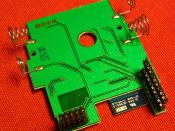
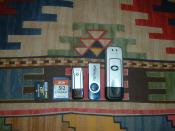

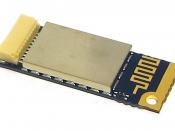
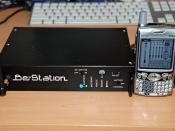
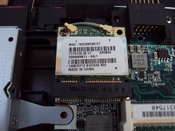
good
good
0 out of 0 people found this comment useful.